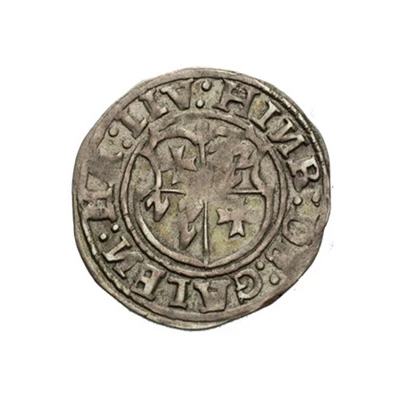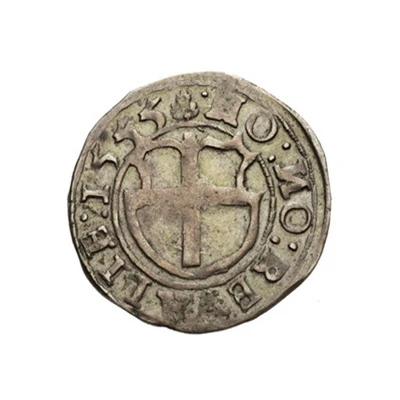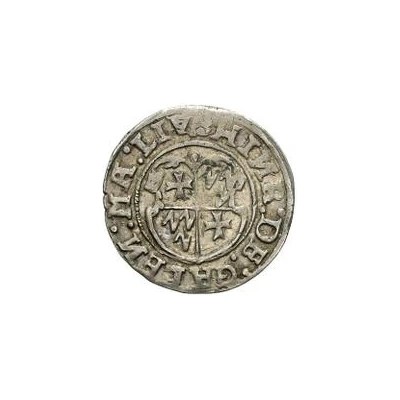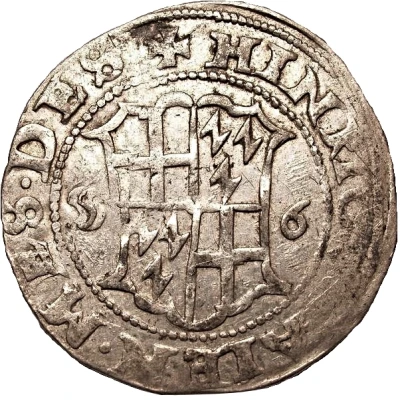


© AUREA Numismatika
1 Ferding - Heinrich von Galen Reval; simple shield
| Silver (.578) | 2.46 g | 24.5 mm |
| Issuer | Livonian Order (Livonian Confederation) |
|---|---|
| Master | Henry of Galen (1551-1557) |
| Type | Standard circulation coin |
| Years | 1553-1557 |
| Value | 1 Ferding = 9 Schilling |
| Currency | Schilling (1422-1561) |
| Composition | Silver (.578) |
| Weight | 2.46 g |
| Diameter | 24.5 mm |
| Shape | Round (irregular) |
| Technique | Hammered |
| Orientation | Variable alignment ↺ |
| Demonetized | Yes |
| Updated | 2024-10-06 |
| Numista | N#93035 |
|---|---|
| Rarity index | 90% |
Reverse
Cross in shield surrounded by legend.
Script: Latin
Lettering: MO : NO : REVALIE : 1555
Translation:
Moneta Nova Revaliensis
New coin of Reval
Edge
Plain
Comment
The exact lettering of the surrounding legend may vary.1553:
1) HINR : DE : GALEN : MA : LIV : / MON : NO : REVALIE : 1553
2) HINR : DE : GALEN : MA : LIV : / MO : NO : REVALIE : 1553
3) HINR : DE : GALEN : MA : LI : / MO : NO : REVALIE : 1553
1554:
1) HINR : DE : GALEN : MA : LIV : / MO : NO : REVALIE : 1554
2) HINR : DE : GALEN : MA : LI : / MO : NO : REVALIE : 1554
1555:
1) HINR : DE : GALEN : MA : LIV : / MO : NO : REVALIE : 1555
2) HINR : DE : GALEN : MA : LI : / MO : NO : REVALIE : 1555
1556:
1) HINR : DE : GALEN : MA : LIV : / MO : NO : REVALIE : 1556
2) HINR : DE : GALEN : MA : LI : / MO : NO : REVALIE : 1556
1557:
1) HINR : DE : GALEN : MA : LIV : / MO : NO : REVALIE : 1557
2) HINR : DE : GALEN : MA : LI : / MO : NO : REVALIE : 1557
1557/4 (over-date):
1) HINR : DE : GALEN : MA : LI : / MO : NO : REVALIE : 1557
Interesting fact
One interesting fact about this coin is that it was minted during the Livonian Order, a military order of German knights who ruled over the territory of Livonia (present-day Estonia and Latvia) from the 13th to the 16th century. The coin features a simple shield with the coat of arms of Heinrich von Galen, the Master of the Order from 1553 to 1557. The use of silver in the coin's minting was a significant choice, as it was a valuable and durable metal that was often used in the production of coins during this time period.



